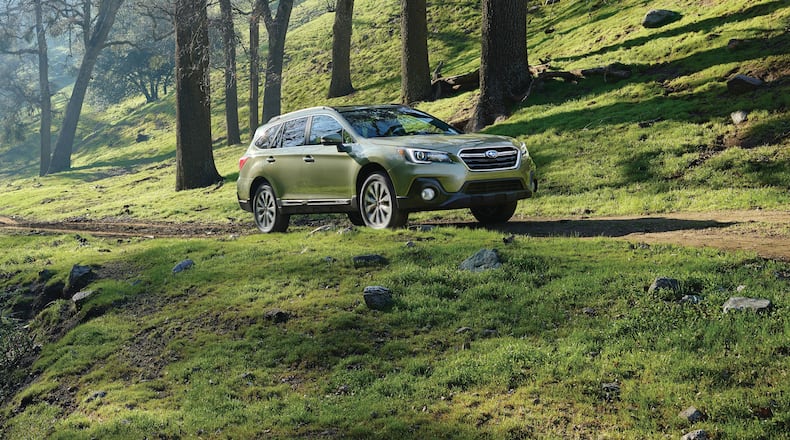I eventually Googled these symptoms and the recommended fix was to turn the engine on, take off the gas cap, put the cap back on, then turn off the engine.
I did this and hocus pocus! When I restarted the engine, the demon was gone! All the warning lights were off. Does this make sense to you? -- Frank
RAY: Total sense. And keep in mind, Frank, not much makes sense to me.
One of the check engine light’s duties is to alert you when there’s a problem with your emissions system. And part of your emission controls is a sealed fuel system. That traps gas fumes and keeps them from leaking into the atmosphere.
The whole fuel system is kept under pressure. If it loses pressure, your car’s computer concludes -- correctly -- that there’s a leak somewhere, and it turns on your check engine light.
One of the most common causes of a pressure loss in the fuel system is also the simplest: a bad gas cap or one that wasn’t put on correctly.
So, if on your last trip to Bubba’s Tacos and Gas, Bubba was checking his GameStop stock while he was pumping and didn’t thread the gas cap correctly, that could cause your fuel system to slowly lose pressure.
Once it lost enough pressure, the computer said “Leak!” and turned on your check engine light to alert you.
Sometimes, when there’s a fuel system fault, the computer will also temporarily disable other systems -- like your cruise control -- to be safe. That’s why those other warning lights came on at the same time.
If removing and replacing the gas cap turned off the warning lights, do your happy dance and keep driving. You’re probably all set.
If the check engine light comes on again, though, you’ll need to have the car scanned. When that light comes on, the computer stores a “fault code” that tells your mechanic why, so he knows where to look for your problem.
If your next scan turns up a code for a bad gas cap, you may just need a new one. Fortunately, Frank, I think the ‘22 gas caps are out now with 1.9% financing.
The Tweel -- terrible name for an interesting concept
Dear Car Talk:
What would you recommend for puncture-resistant tires? I keep hoping for something like Tweels to come out.
With a couple of surgeries under my belt and slowly advancing in age, it would be reassuring to be able to worry less about something like changing a tire. Thanks for your time! -- Rob
RAY: The Tweel is both a terrible name and an interesting concept. Michelin engineers invented a combination tire and wheel (“Tweel”) in which the tire requires no air.
It uses a springy outer band that has the tire tread on the outside of it. In the middle, they put whatever bolt-hole configuration the car takes. And then radiating out from that inner “wheel” are high-strength plastic spokes.
The strength of the outer belt and spokes apparently makes it rigid enough to allow for handling and braking. And the flexibility of the outer band makes it comfortable enough so you don’t get welts on your head from bouncing off the headliner.
There are two major advantages of the Tweel. One is that no air is required, so if the structure proves durable, it could make tires much more reliable, reducing or eliminating tire failure as a reason to get stranded.
They also apparently weigh less than typical wheel-tire combinations. And weight savings lead to fuel savings (or more range if you’re driving an electric vehicle) and better handling.
So far, we’ve only seen Tweels that are made for small utility vehicles, like mowers and golf carts. But Michelin recently ran a Mini Cooper equipped with Tweels, so maybe they’re getting closer to using them on real cars.
Of course, they’ll have to persuade car manufacturers to go along, and they’ll have to win a knife fight with the wheel manufacturing lobby first.
So, they’re not an option right now, Rob, and probably won’t be for at least several years. In the meantime, you can use run-flat tires. Those have been around for decades. And they work well. They use air, but they come with a very rigid side wall, so that if there’s a puncture, you can keep driving for 50 miles or so -- enough to get to a tire shop, so you don’t have to kneel in the mud in your Armani suit and jack up your car.
How do you even know you’ve punctured a tire with run flats? Your tire pressure monitor light comes on to warn you. Run flats tend to be more expensive, faster to wear out, and a little less comfortable than traditional tires. But if peace of mind is important to you, they’re a perfectly good option, Rob.
Got a question about cars? Write to Ray in care of King Features, 628 Virginia Drive, Orlando, FL 32803, or email by visiting the Car Talk website at www.cartalk.com.
About the Author

